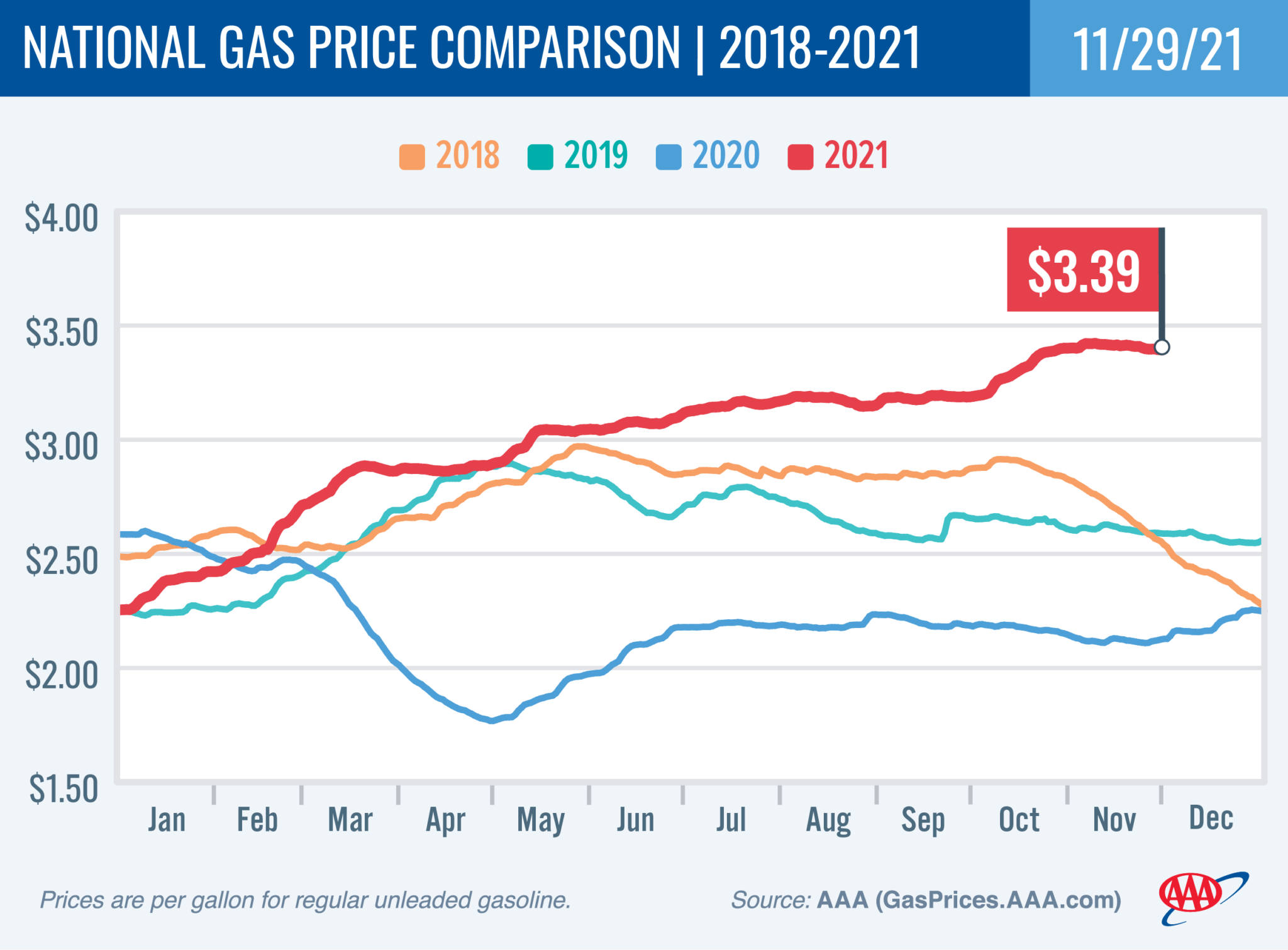Crude oil prices have tumbled more than $10 to under $68 a barrel since Friday after news of the Omicron COVID-19 variant broke. Meanwhile, the national average price for a gallon of gas dropped a penny to $3.39.
“It’s too soon to tell if fears of a global economic slowdown caused by the Omicron variant will push oil prices lower for the long term,” said Andrew Gross, spokesperson for AAA. “But for now, the upward pricing pressure due to tightened supply and high demand seems to have abated, and that will likely result in pump prices stabilizing.”
But J.P. Morgan says there’s still reason to believe oil could spike dramatically in the coming months — as much as $125 a barrel in 2022 and $150 in 2023 — according to research published Monday.
Most of Crude’s price is in the hands of OPEC+, the group of oil-producing nations including Saudi Arabia and Russia that has dramatic influence on global prices. J.P. Morgan’s strategists say OPEC+ is likely to pause planned monthly increases of 400,000 barrels per day in 2022, in order to balance the market “and potentially cut a pending impact of new Covid variants.”
Today’s national Gasoline average of $3.39 per gallon is up $1.27 more than a year ago, and up $0.70 over November of 2019, pre-pandemic.
Quick Stats
The nation’s top 10 least expensive markets: Oklahoma ($2.95), Texas ($2.98), Arkansas ($3.02), Missouri ($3.04), Kansas ($3.04), Mississippi ($3.04), Kentucky ($3.06), South Carolina ($3.09), Tennessee ($3.10) and Wisconsin ($3.10).
The nation’s top 10 most expensive markets: California ($4.71), Hawaii ($4.35), Nevada ($3.96), Washington ($3.88), Oregon ($3.79), Arizona ($3.77), Alaska ($3.71), Idaho ($3.68), Utah ($3.67) and Pennsylvania ($3.59).








